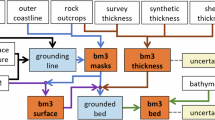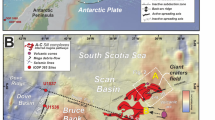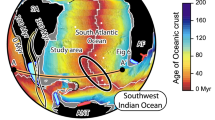Abstract
IN Prof. J. Milne's discourse at the Royal Institution which appeared in NATURE of April 23 is given an interesting map on p. 593 showing the folds and probable direction of fault lines in the Atlantic. In that map is shown the mid-Atlantic “rise” extending to about 40° S. The map, however, would have been more interesting had Prof. Milne included in it the recent bathymetrical researches of the Scotia, which were described in a preliminary paper in the Scottish Geographical Magazine in August, 1905. Here it is shown that the Scottish expedition sounded out this “rise” for a thousand miles further south than Prof. Milne has marked it, and also that that “rise” has probable connection with another running in a more or less E.N.E. and W.S.W. direction from the south of South America through South Georgia and the Sandwich Group, and also from Graham Land, Antarctica, through the South Orkneys and the Sandwich Group, thence passing eastward through Bouvet Island to Madagascar and the east coast of Africa. The extension of the mid-Atlantic “rise” continues the reflection of the South American continent, and again the transverse “rise” reflects the hypothetical and known portions of the coast-line of Antarctica.
This is a preview of subscription content, access via your institution
Access options
Subscribe to this journal
Receive 51 print issues and online access
$199.00 per year
only $3.90 per issue
Buy this article
- Purchase on SpringerLink
- Instant access to full article PDF
Prices may be subject to local taxes which are calculated during checkout
Similar content being viewed by others
Rights and permissions
About this article
Cite this article
BRUCE, W. Fault Lines in the Atlantic. Nature 78, 31 (1908). https://doi.org/10.1038/078031b0
Issue date:
DOI: https://doi.org/10.1038/078031b0



